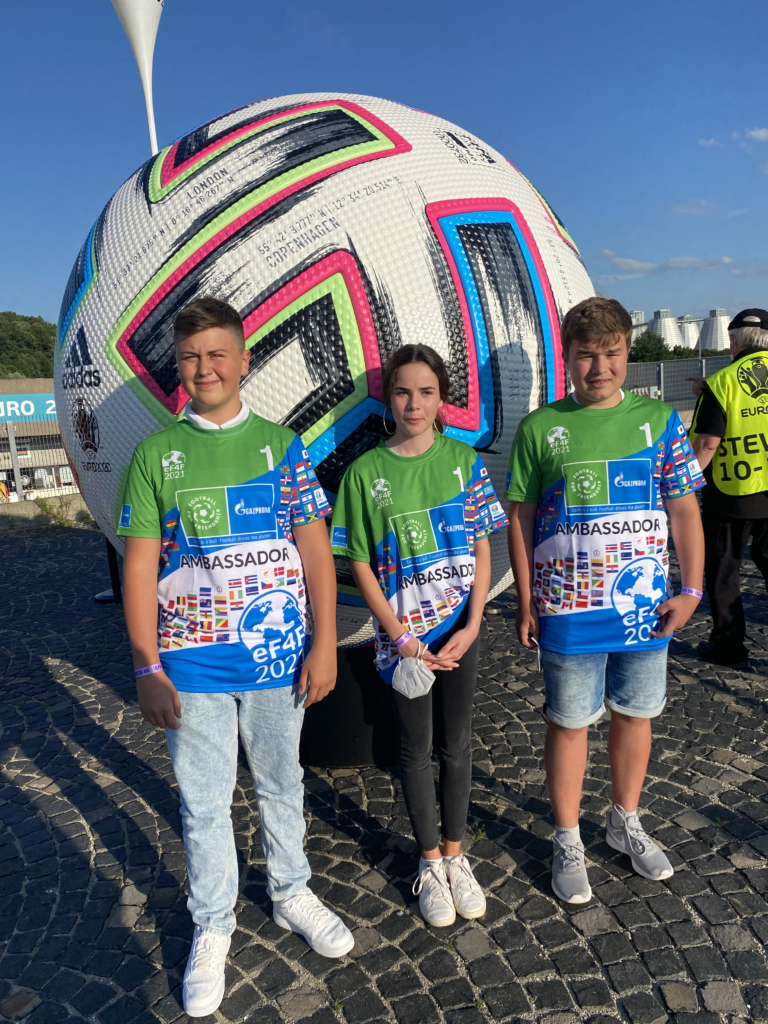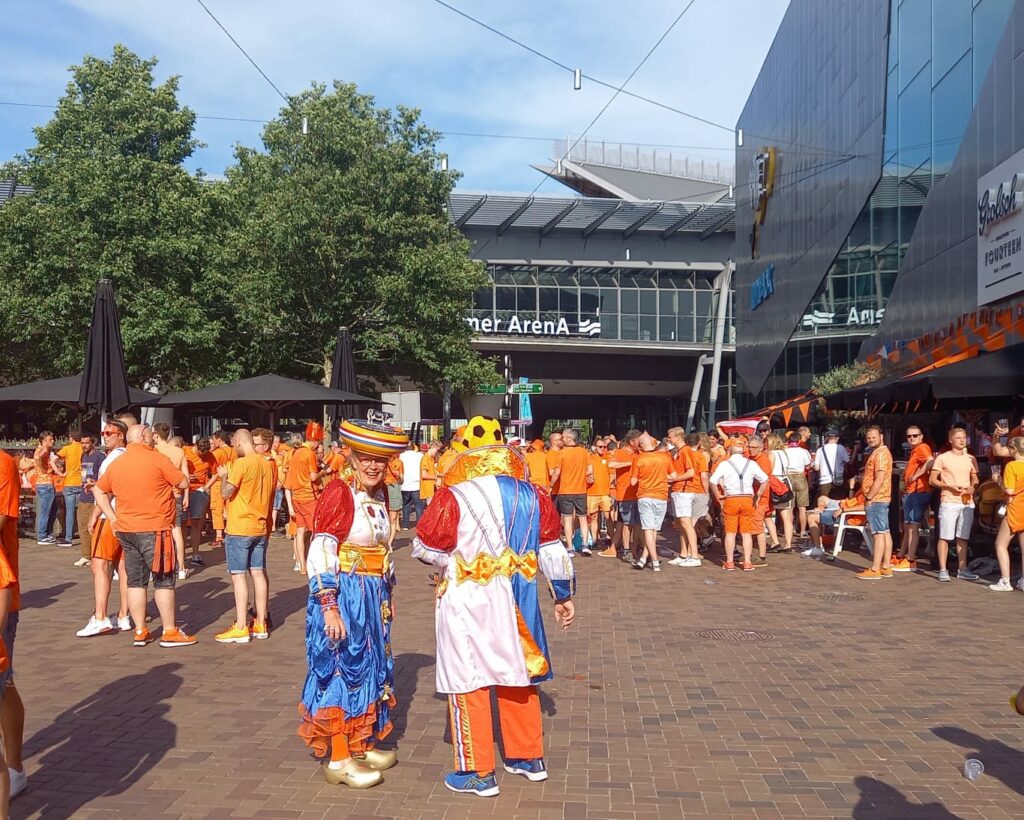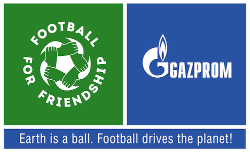International Children’s News Bureau EURO2020: Digest 3 – Амsterdam, Munich, Glasgow
It’s time to see how Glasgow, Munich, and Amsterdam met the Euro 2020.
Four matches were held in Germany and they brought us some unforgettable moments. And some incidents too. Young Journalist Felix Straub witnessed one during the game between Germany and France: “Going back to our places we saw a few nice choreographies. Suddenly a paraglider appeared over the stadium. When he dropped a ball into the stadium, it got stuck on the roof and fell into the stadium. He was able to prevent worse and ended up on the lawn.
What a shock!!!
After the national anthems, the game started. It was a great game from the start with many strong players. It was unbelievable to see stars like Mbape, Pogba, or Benzema live. Unfortunately, hummels got an unfortunate own goal. After many chances on both sides and two offside goals from the French, it remained 1-0 for France. A pity. We would have liked to have celebrated a goal from the Germans.

After the game, the French celebrated their team at the fence. When we leaving the stadium, some Germans celebrated together with the French. They started singing songs together. Everything was peaceful and great.”
All the teams received enormous support from the spectators who definitely missed watching the matches at the stadiums. But it won’t be a mistake to call the fans from the Netherlands the brightest and the most noticeable with their orange clothes. During the match it was impossible to say that the stadium was filled only to 50% – the stands literally turned into the orange sea. In his report from the match, F4F Young Journalist Frej Goosens noted: “That’s how Amsterdam colored orange. I was at the stadium during the Euro2020 match The Netherlands versus Austria. It was an amazing experience. Not only to see the match but also to see the passion of the public.

When the game was on for ten minutes the referee went to the side to check if it was a penalty for the Netherlands. When the referee did gif the penalty a few minutes later the public went already crazy and it was not even scored yet. At the moment Memphis was ready to take the penalty the whole public was standing and you could feel the tension. When he scored everyone started to jump and shout and wave with their orange flags. Minutes later Memphis shot from a hard corner with a dropkick in the side net of the goal. Like many other people, I thought it was a goal. And if it had been a goal, it would be world-class. So for a second, we went mad with joy.
When later the referee blew the half-time whistle. The public immediately left their seats for drinks. The first ten minutes in the second half were hard for the Dutch team. Then the public began to sing and clap. In the 67th minute Malen, who just came from the bench, came in a one-to-one position to the keeper of Austria. We all thought he would shoot into the goal, but surprisingly enough decided to give the ball to Dumfries, who could tap it in for an empty goal. Again the whole stadion colored orange with many flags and people in orange shirts. This was the last goal of the match. After the match, there was a big group next to the Johan Cruyff Arena. They were singing loud, doing crazy because they were so happy that the Netherlands has made it till the next round. They were having so much fun with each other. So you can see football brings people together and that it’s more than just a sport.”
Definitely, football brings people together. Like a bridge. It is no coincidence that the bridges became the symbols of the championship in many host cities. e.g. the Glasgow symbol for Euro 2020. “It’s a phenomenal symbol. The bridge connects people on the different shores of the river. And football also connects people all across Europe. This year an incredible format of the Euros, where there are 11 hosting cities. And Scottish Glasgow is one of them. The symbol of Glasgow is a bridge that stands on the river of Clyde- Clyde Arc.
Clyde Arc – also called the “squinty bridge” because of its diagonal construction. The bridge was opened in 2006, and it is one of the most beautiful and loved sights of Glasgow.” – commented Ivan Artamonovs, F4F Young Journalist from Scotland.




